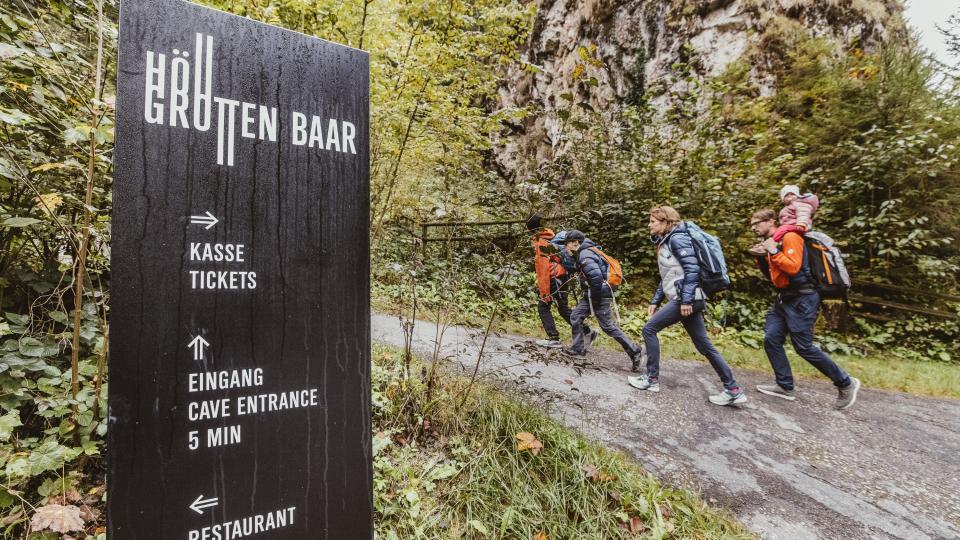The most important river in the canton of Zug, the Lorze, runs through a tranquil forest to the legendary Höllgrotten caves, past idyllic bathing spots, castle ruins, three mighty bridges and landmarks of the canton’s industrial history.
The most important river in the canton of Zug, the Lorze, runs through a tranquil forest to the legendary Höllgrotten caves, past idyllic bathing spots, castle ruins, three mighty bridges and landmarks of the canton’s industrial history.
On a hot summer’s day, what could be better than a walk through a cool, shady forest? Admittedly, there are forests all over Switzerland, but the densely wooded Lorzentobel is special. This ravine offers an element of spectacle that you wouldn’t usually expect from such a small area. Both people and nature have made their mark here in an almost iconic way.
The impressive Höllgrotten cavesnear Baar show just how much the forces of nature have impacted the landscape here. Around 18,000 years ago, the glacial ice from the Ägeri valley gouged deep into the rock, forming the Lorze’s current riverbed. You might assume that the Höllgrotten caves themselves were also formed by the ice. But that’s not the case. They were only formed after the Ice Age and are therefore actually quite new. Unlike many other stalactite caves, they are not located deep underground, but rather just below the surface.
Therefore, if you want to visit the Höllgrotten caves, you first have to climb a few metres up from the valley floor. It’s worth the effort, though. As you descend through the grottoes back to the ticket office on the banks of the Lorze, you will come across a few surprises and lots of information about this unique natural structure. Each grotto is a little world of its own.
Do you want to know more? Claudia Wirz set off for the wild and romantic Lorzentobel for our destination magazine #inlovewithzug. Click the download link for the whole story.
